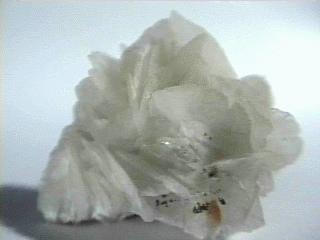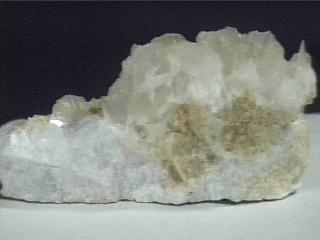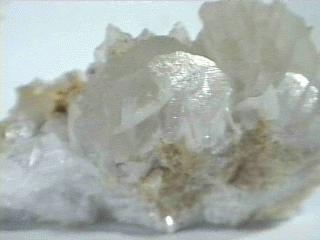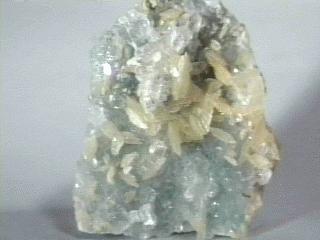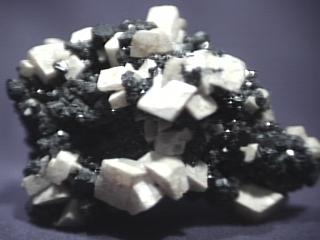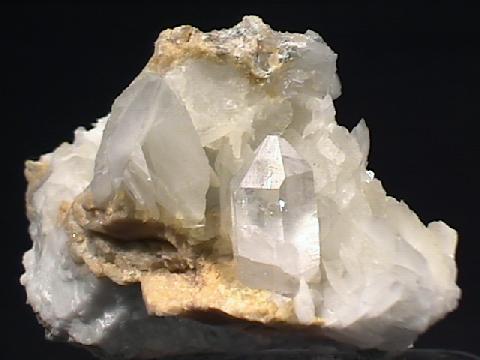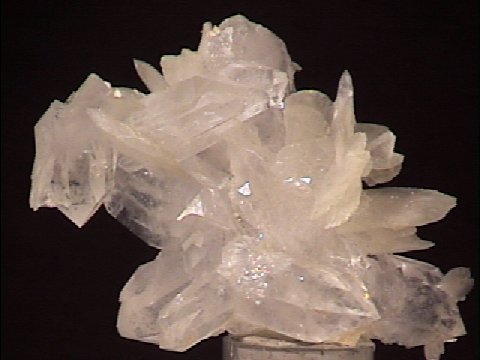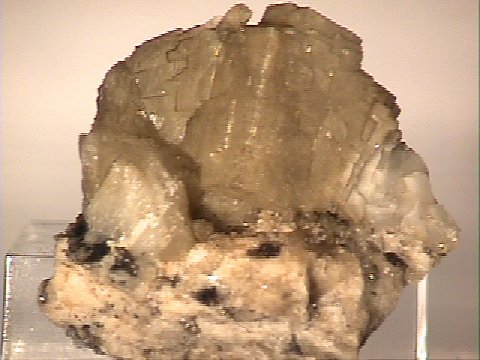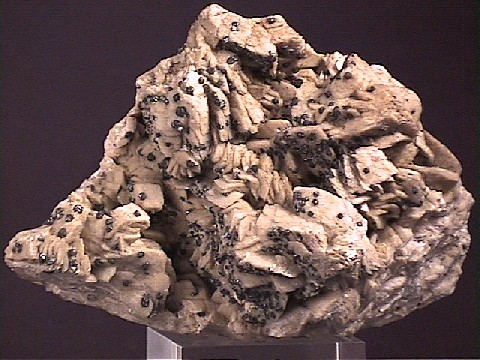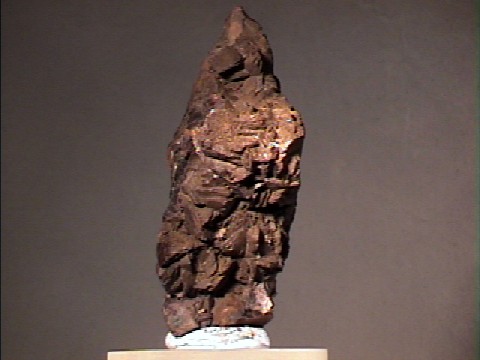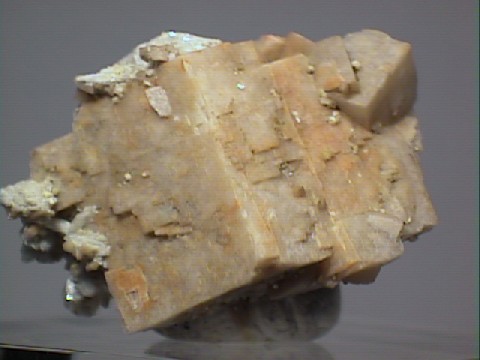 ANKERITE
ANKERITE
- Chemistry: Ca(Fe, Mg, Mn)(CO3)2, Calcium Iron Magnesium Manganese Carbonate
- Class: Carbonates
- Group: Dolomite
Ankerite is a member of the Dolomite Group of minerals. Like dolomite, (CaMg(CO3)2) the structure of ankerite consists of alternating layers of carbonate groups (CO3) and layers of metal cations. To add complexity, the cation layers alternate between calcium and iron. This alternation has the effect of lowering the symmetry of the crystals to only bar 3. Without this ordered alternation of metal ions, ankerite's symmetry would be the same as calcite's symmetry, bar 3 2/m. Dolomite, siderite and ankerite share many similarities and are often confused for each other. Ankerite however is usually more dense, opaque and deeply colored than dolomite; but not as much as siderite.
The conversion of calcite to dolomite has troubled sedimentologists and as yet has not been adequately explained. The puzzle has often been called "The Dolomite Problem" and a mechanism is needed to explain the large deposits of dolomite rock found around the world. Some sedimentologists believe that ankerite may be a short-lived intermediate in a transformation between calcite (CaCO3) and dolomite. It is chemically and crystallographically easier to explain a transformation from calcite to ankerite to dolomite; than it is to explain the transformation from calcite to dolomite. But the diffinitive answer is still unknown.
PHYSICAL CHARACTERISTICS:
- Color is off-white, brown and gray; also yellow to orange.
- Luster is vitreous to pearly.
- Transparency: Crystals are commonly translucent.
- Crystal System is trigonal; bar 3.
- Crystal Habits generally are curved rhombohedral, can also be compact, granular and massive.
- Cleavage is perfect in three directions, forming rhombs.
- Fracture is conchoidal.
- Hardness is 3.5 - 4
- Specific Gravity is 3.0 - 3.1 (average).
- Streak is white.
- Other Characteristics: Indices of refraction are 1.54 and 1.73. Crystals tend to be brittle and will dissolve in hydrochloric acid with some effervescence.
- Associated Minerals include sulfide ores such as pyrrhotite, sphalerite and galena and other carbonates such as calcite, dolomite, rhodochrosite and siderite. Also found with quartz, albite and chlorite.
- Notable Occurrences include the type locality of Styria, Austria as well as the Homestake Mine, South Dakota and Calaveras County, California, USA; Chuhuahua, Mexico; Australia; New Zealand; Hungary; England; Transvaal, South Africa; Peru and Eastern Canada.
- Best Field Indicators are its crystal habit, hardness, cleavage, color and associations.

